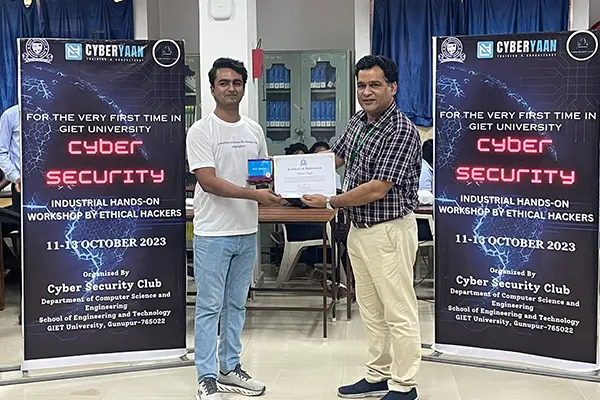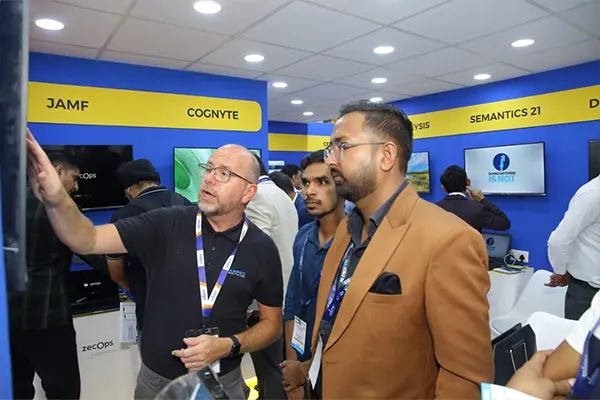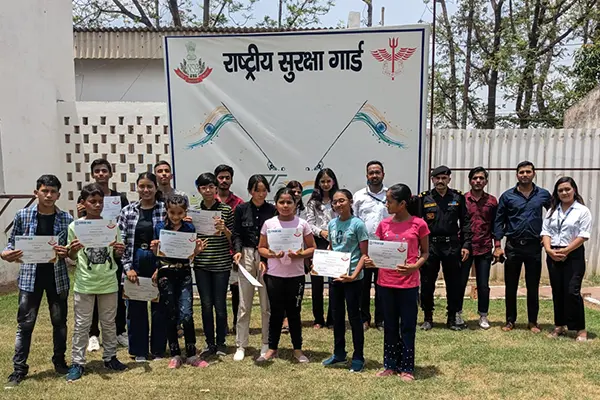Application Security Penetration Testing
Explore Application Security Penetration Testing techniques to identify vulnerabilities and secure applications from cyber threats in this comprehensive training program course.
Book your Trial Demo Class
You can call us at +91 7428748577 | 7428748576
Application Security Penetration Testing Course
Our Application Security Penetration Testing Course equips you with essential skills to identify and mitigate security vulnerabilities in applications. You’ll learn the latest penetration testing methodologies, tools, and techniques to assess the security posture of web and mobile applications comprehensively. Through hands-on labs and real-world scenarios, you’ll gain practical experience in discovering and exploiting common vulnerabilities such as SQL injection, Cross-Site Scripting (XSS), and authentication bypass. By the end of the course, you’ll be proficient in conducting thorough security assessments, producing actionable reports, and enhancing the security of applications to protect against cyber threats effectively. Advance your career in cybersecurity with our expert-led training.
1.1 : Introduction to Computer Network
1.2 : Network Topologies and Types
1.3 : IP Addressing
1.4 : Subnet Mask, Subnetting and CIDR
1.5 : VLSM, Wild Card, Summarization
1.6 : Networking Models
1.7 : OSI Model
1.8 : Networking Device, Cabling, Network Simulator Tools
1.9 : ARP and ICMP
1.10 : Packet Flow
1.11 : Routing – Static and Dynamic
1.12 : Static Routing – Next HOP IP and Exit Interface
1.13 : Dynamic Routing - RIP, EIGRP and OSPF
1.14 : Remote Service Confriguration
1.15 : DHCP Configuration
1.16 : ACLs
1.17 : Switching
1.18 : L2 Protocols - CDP, VLN, STP, DTP, VTP
1.19 : Ether Channel
1.20 : Port Security
2.1 : Introduction to linux
2.2 : Setting Up Lab
2.3 : Exploring Kali
2.4 : Sudo Overview
2.5 : Navigating the file system
2.6 : Basic Commands
2.7 : Creating, Viewing and Editing text Files
2.8 : Managing users and Group
2.9 : Managing users and Group
2.10 : Linux Networking
2.11 : Process Management
2.12 : Services and Demos
2.13 : Log Analysis
2.14 : Archiving Files
2.15 : Debain Package Management
2.16 : Road Ahead – Towards Penetration Testing
3.1 : Introduction
3.2 : Set Up
3.3 : Variables and data types
3.4 : Numbers
3.5 : String formatting
3.6 : Booleans and Operators
3.7 : Tuples
3.8 : Lists
3.9 : Dictionaries
3.10 : Sets
3.11 : Conditionals
3.12 : Loops
3.13 : Reading and Writing
3.14 : User Input
3.15 : Exception and Error Handling
3.16 : Comprehensions
3.17 : Functions and Code Resuse
3.18 : Lambdas
3.19 : The Python Package Manner
3.20 : Python Virtual Enviornment
3.21 : Introduction to Sys
3.22 : Introduction to request
3.23 : Introduction to pwntools
3.24 : Projects
4.1 : Networking Refresher
4.2 : Linux Refresher
4.3 : Introduction to Information Security
4.4 : Introduction to Ethical Hacking
4.5 : Foot Printing / Information Gathering
4.6 : Scanning
4.7 : Enumeration
4.8 : Vulnerabilities Analysis
4.9 : System Hacking
4.10 : Malware and Threats
4.11 : Sniffing
4.12 : Social Engineering
4.13 : Denial of Service
4.14 : Session Hijacking
4.15 : IDS, IPS and Firewalls
4.16 : Hacking Web Servers
4.17 : Hacking Web Applications
4.18 : SQL Injection
4.19 : Hacking Wireless Network
4.20 : Hacking Mobile Platforms
4.21 : Introduction to IOT
4.22 : Introduction to cloud computing
4.23 : Cryptography and Steganography
5.1 : Introduction to Web Application Security
5.2 : Setting up the Environment
5.3 : Reconnaissance and Scanning
5.4 : Exploitation Techniques
5.5 : Authentication and Session Management
5.6 : Advance Web Application Attacks
5.7 : Reporting and Remediation
5.8 : Legal and Ethical Consideration
5.9 : Practical Applications
5.10 : Recap and Review
6.1 : Introduction to Android Application Security
6.2 : Setting up Your Android Application Security
6.3 : Android Penetration Testing Methodologies Detailed Explanation
6.4 : Lab Setup Design
6.5 : Traditional Android Penetration Testing Report - Test Cases
6.6 : Traditional Android Penetration Testing Approach and Guidelines
6.7 : Android Attack Surface – Client Side Vulnerabilities
6.8 : Android Attack Surface Server Side Vulnerabilities
6.9 : Android Attack Surface Logical Security Threats Module
6.10 : OWASP Mobile Top 10
6.11 : Set up Android Debug Bridge Utility (adb)
6.12 : Vulnerable Android Application Source Code Review
6.13 : Structure of an Android Application Package (APK)
6.14 : Reversing an Android Application using dex2jar
6.15 : Reversing an Android Application using apktool
6.16 : Signing an Android Application Manually
6.17 : Android Code Obfuscation and Code Protection
6.18 : Adding Malicious Code to Android Apps
6.19 : Debugging Detection
6.20 : Root Detection
6.21 : VM Detection
6.22 : Ios Application Basic Standards

Ready to Start Your Career in Cyber Security Industry
Mobile Number : +91 7428748577 | +91 7428748576
Trending Courses
Contact Number:
+91 7428748577 | 7428748576
(175 Reviews)
(149 Reviews)
It covers a variety of topics, including network security, online application security, ethical hacking techniques, and penetration testing methodology.
Contact Number:
+91 7428748577 | 7428748576
Contact Number:
+91 7428748577 | 7428748576
(133 Reviews)
(142 Reviews)
Contact Number:
+91 7428748577 | 7428748576

Best Teaching

Convenient Practice

Video Lecture
We provide visual and auditory learning experiences, enhancing comprehension & engagement with educational content.

Live Classes
What People Say About Cyberyaan























